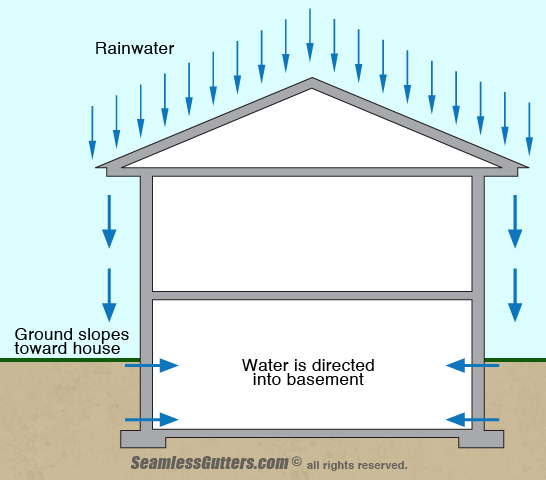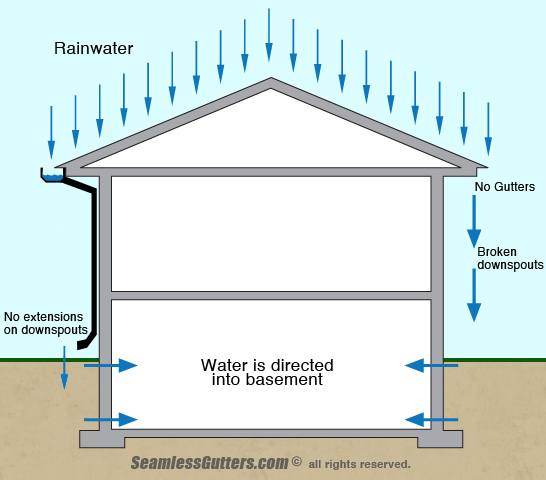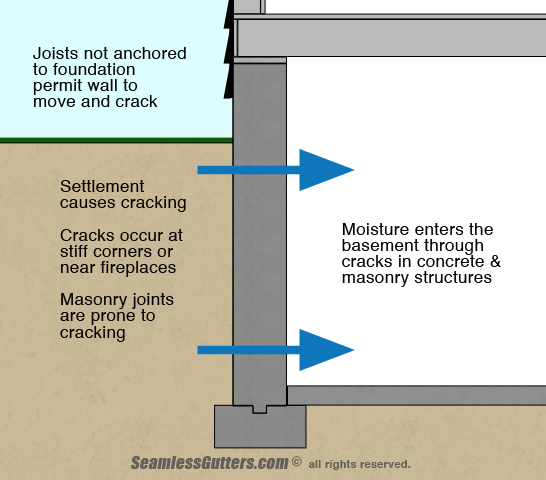Typical Causes of Basement Moisture Problems
Inadequate Grading
PROBLEM: If the ground around a foundation is level or slopes toward the house, water is directed into the basement. The soil next to the house is often backfilled without proper compaction and later settles. This is especially true under stoops where water can collect next to the basement wall.

SOLUTION: Place earth around the house so that it slopes away from the foundation wall a minimum of one inch per foot for at least six feet.
Defective or Missing Gutters and Downspouts
PROBLEM: Missing gutters and downspouts cause rainwater to be directed toward the foundation perimeter and expose leaks in foundation. A downspout without an extender or splashblock is worse than no downspout at all. It is depositing the huge volume of rainwater from the roof in a single concentrated location near the basement.

SOLUTION: Place a minimum of one downspout per 40 linear feet of roof eave. Extensions should discharge water at least four feet beyond the wall. Sloped concrete sidewalks around basements are very effective in directing rain runoff.
Structural Cracks
PROBLEM: Concrete and concrete block foundations usually develop some cracks. They can be severe if floor joists are not properly connected to the foundation wall, thus permitting the wall to move. Also, soil settling causes cracking. Places where walls meet rigid structures like the fireplace often crack as well. Usually, drainage removes the water from cracks, but repair may be necessary.

SOLUTION: Proper footing design and proper connection between the foundation wall and the structure above are required (e.g. anchor bolts or straps at the sill plate and floor joists nailed to the sill plate).